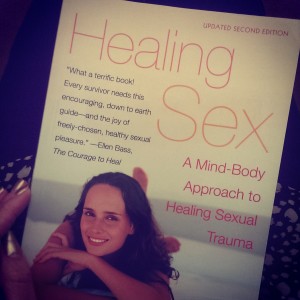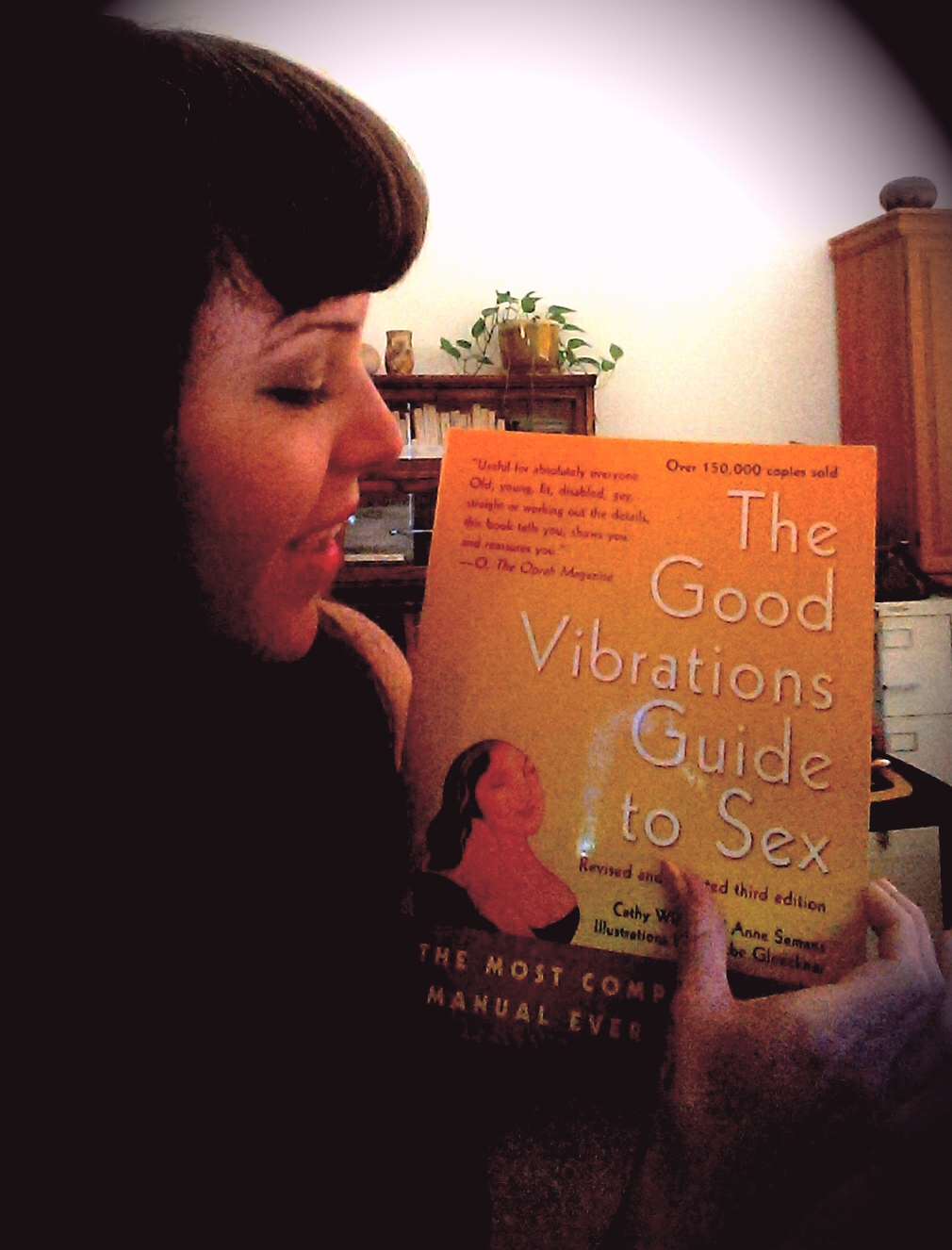“We all began female, and always had both sexual hormones in us. We always had masculine and feminine behavioral traits, which we had to train into gender-appropriate behaviors, even though they were traits that everyone has. We selectively encouraged or repressed traits, so for most of our history we have reinforced gender. But in our deepest selves we were always both.”
(Kim Stanley Robinson, 2312)
From time to time I’m asked why I specialize in gender and sexuality. My answer shifts and grows as I learn more about myself, but ultimately it revolves around being able to support people in knowing and expressing exactly who they are. Really that is the core of any therapy, whether or not its focus is on gender or sexuality. But such a focus, especially coupled with a somatic approach, makes this work especially valuable and sustaining.
I chose that quote from the science fiction of Kim Stanley Robinson for a couple of reasons. Mostly because the brilliant Robinson offers incredibly insightful bits of future history. But also because even inside this beautiful piece of writing, he does that thing that we all do so often: needlessly assign gender.
For the first five to six weeks of gestation, only the X chromosome expresses. This is where we developed the notion that we all begin female, which I appreciate and find very romantic. But beyond the intention to draw people together, it doesn’t make much sense to give an embryo a gender label. However, intention is exactly what words are all about.
So, I’d like to highlight what I believe are very important aspects of the landscape of non-binary and queer identities.
Understanding Intent
There is very likely no one who identifies as non-binary in order to screw with you. The intention is to express themselves. It is to communicate that they don’t relate to the words “male” or “female” as we’ve been using them. It is a rejection of the baggage that comes with labels that have been misused or overused. It is a request to focus on what is important to them, rather than on what you might assume based on your past experiences with a particular gender. When you really think about it, it’s quite clever. It makes me think of the many women who have hidden behind male names in order to have their work taken seriously. Historically, we have been quite destructive in our use of gender notions, so it should come as no surprise that so many people in younger generations are wriggling out from under gender labels altogether. We must constantly return to what honors our individual bodies and selves. Each of us defines our own gender.
The Positive Effects of Re-defining Gender
Words hold tremendous power. Didn’t we all secretly hate that schoolyard rhyme about sticks and stones? Who made that up? Words can hurt like hell! Removing toxicity from our language helps everyone. I suspect that in a generation or two, our associations with gendered terms will have very little negative charge. Perhaps they’ll even have grace restored to them. They’ve come a long and interesting way already. Just take a peek at the etymology of words like she, he, and they. We do seem to be amidst an acceleration of changes and a fight against bottlenecking, and I believe we’re well on our way to resetting inclusiveness.
This is about to make for two science fiction references in one article, so bear with me. One of my favorite aspects of the remake of “Battlestar Galactica” is how infrequently gender is bothered with. Bathrooms are gender-neutral (which is never remarked upon), there are almost no gendered slurs uttered, and the only gender tropes or gendered dynamics included in the writing are there to make a strong point about their insidiousness. It’s a fine example of what we might call ultra feminism, a term my mother recently offered, or post-feminism. By limiting when it’s focused upon, gender is no longer a distraction. This shows up in the characters’ word use, too. It took me a few episodes to get over the term “sir” being used for any gender, but really that isn’t very long at all. I quickly experienced the term losing its association with gender. And doesn’t that make the title even better? It was never intended to distinguish between genders; its function is to show respect.
There are, of course, many possible emotional and psychological effects of this shifting of word use. When someone I relate to or who seems uniquely themselves decides against using female pronouns, I sometimes react with disappointment at the thought that the term “woman” is losing some of its needed complexity. But that puts us right back in the subjective, because that response is entirely about me and my process. I have fought internally and externally for many years to have the words “girl,” “woman,” “female,” and “feminine” encompass an adequate amount of complexity. So when someone exits like that, it can feel as though the term is reduced. It can sort of start over my process of redefining or re-identifying with female terms. But I enjoy something about this, too, as it renews my sense of the limitations of words. Words are only as effective as what they are able to communicate, so it’s necessary to continually return to an openness to understand the intention behind them as it relates to a particular person.
Different Words for Different People
Different people need to use different words. This is something that any good education on psychotherapy will teach you: hear, understand, and use the client’s own words. The “negotiation of meaning” that occurs in therapy is a huge portion of the work, because we humans lean so heavily on verbal communication. If understanding and connection is to be created, we must know what the words being used are meant to convey. Nonverbal cues give us a lot of information, but there is still too much room for assumption if we don’t consistently reflect and clarify. We need to know what the particular speaker means on the visceral level. I know what “thrilled” feels like in my body, but it won’t feel exactly the same to yours. So we must stay open and curious, and clarify.
The term “queer” is usually a good example for demonstrating this point. For people of a certain age, “queer” was a slanderous strongly associated with trauma and other unpleasant experiences. Along came a younger generation who decided to reclaim the term, but it still held its dark magic for the older crowd. And while those associations have shifted for many because of this new use of the term, many still prefer not to identify with it. Why would we ask them to? We can only offer a new way of looking at it by owning our own use of it, which they may find helpful and which puts us on a path to where “queer” will rarely evoke negative associations anymore.
For the most part, as in the above example, people use words intentionally. Even when use isn’t conscious or deliberate, it has an intended purpose. The knowledge that words are a fluid process is an important part of understanding language and communication. Speaking or writing something creates a change either in us or others or both.
Words are a process.
Words change through a process, and the words themselves allow us to process. For example, frustration is very often a gateway emotion. People will often say they are frustrated when they are bashful about or not conscious of feeling anger, sadness, or fear. When this happens, correcting someone would be very unhelpful. Instead, I watch for signs of anger, sadness, or fear, and then I can reflect what I see. The use of the word “frustration” should communicate to me that the person using it needs a little help with safely feeling and expressing something deeper. If I fail to recognize that words are a process, I fail to receive the entire message. “Inaccuracies” like these stem from somewhere, and that somewhere often needs our attention as much as any other part of what’s being conveyed.
What’s Next?
I’ve noticed that a lot of conversations about the shifting landscape of gender tend to include a nod to the notion that all people contain both feminine and masculine energies or traits. So I find it interesting to see something of a cycle reflected in this. Perhaps we are returning to more helpfully abstract definitions where traits are not considered to be limited to any particular group of people. In my recent Reddit AMA, someone asked how I expect relationships to gender will change as equality grows. It was a very rich question to think about and attempt to answer, and I’m reminded of it again now. I know I’m very curious about what will come next, particularly in regards to how the definitions of “masculine” and “feminine” will change and evolve over the next several decades. Kim Stanley Robinson offers a thought in Blue Mars about paradigms being residual and emergent, which I find provides a useful frame:
“Each great socioeconomic era was composed of roughly equal parts of the systems immediately adjacent to it in past and future. The periods immediately before and after were not the only ones, involved, however: they formed the bulk of a system, and comprised its most contradictory components, but additional important features came from particularly persistent aspects of more archaic systems, and also faint hesitant intuitions of development that would not flower until much later.”
I am very much looking forward to seeing what will unfold and flower over the next few generations. I suspect that a lot of good will come from our brave and increasing insistence on honoring individual bodies. We have gotten quite good at thinking, and we are moving towards getting quite good at feeling, too. The two bring a beautiful balance- one that’s necessary for us to function well. Take heart in what we’re seeing in our modern landscape of gender. It is an excellent and important step in our collective ability to get out of our own way.

